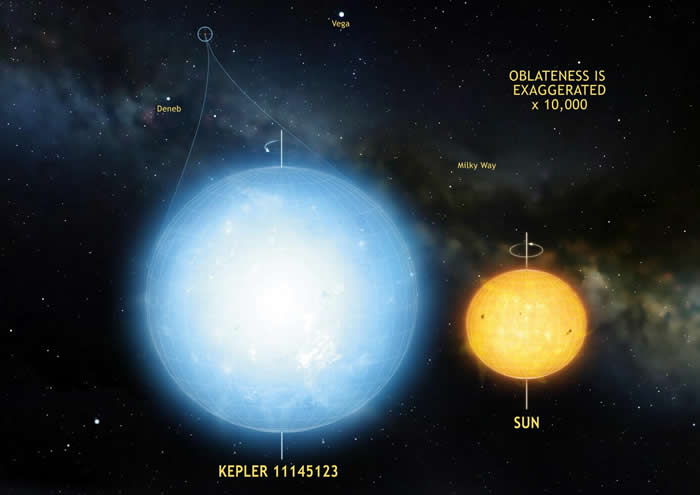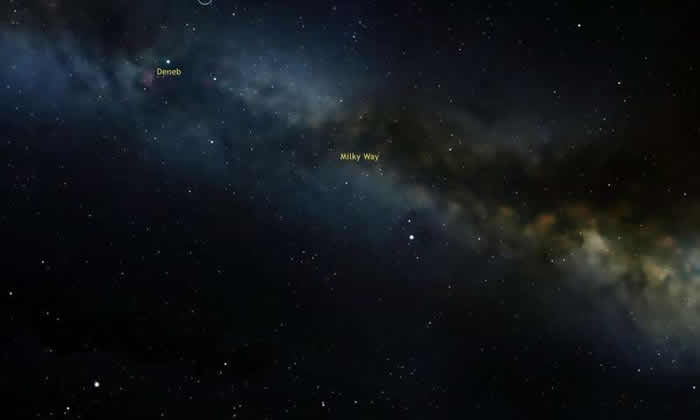Twinkle twinkle distant star, oh I wonder how round you are?
Nobody is perfect, and the same goes for stars. Stars are not perfect spheres, and whilst they rotate they become flat due to the centrifugal force.
Researchers from the Max Planck Institute for Solar System Research and the University of Göttingen have succeeded in measuring the oblateness of a slowly rotating star with unprecedented precision.

The researchers have determined stellar oblateness using asteroseismology – the study of the oscillations of stars. The technique is applied to a star 5000 light years away from Earth and revealed that the difference between the equatorial and polar radii of the star is only 3km, which is incredibly small considering the star’s mean radius is 1.5 million kilometers; which means that the gas sphere is astonishingly round.
All stars are flattened by the centrifugal force as they rotate. The faster the rotation, the more oblate the star becomes. Our Sun rotates with a period of 27 days and has a radius at the equator that is 10km larger than at the poles; for the Earth this difference is 21km. Laurent Gizon from the Max Planck Institute and his colleagues selected a slowly rotating star named Kepler 11145123. This hot and luminous star is more than twice the size of the Sun and rotates three times more slowly than the Sun.
The team selected this star to study because it supports purely sinusoidal oscillations. The periodic expansions and contractions of the star can be detected in the fluctuations in brightness of the star. NASA’s Kepler mission observed the star’s oscillations continuously for more than four years. Different modes of oscillation are sensitive to different stellar latitudes.
For their study, the authors compare the frequencies of the modes of oscillation that are more sensitive to the low-latitude regions and the frequencies of the modes that are more sensitive to higher latitudes. This comparison shows that the difference in radius between the equator and the poles is only 3km with a precision of1 km.
Gizon explained: “This makes Kepler 11145123 the roundest natural object ever measured, even more round than the Sun.”
Surprisingly, the star is even less oblate than implied by its rotation rate. The authors propose that the presence of a magnetic field at low latitudes could make the star look more spherical to the stellar oscillations. Just like helioseismology can be used to study the Sun’s magnetic field, asteroseismology can be used to study magnetism on distant stars. Stellar magnetic fields, especially weak magnetic fields, are notoriously difficult to directly observe on distant stars.
Kepler 11145123 is not the only star with suitable oscillations and precise brightness measurements.
Gizon added: “We intend to apply this method to other stars observed by Kepler and the upcoming space missions TESS and PLATO. It will be particularly interesting to see how faster rotation and a stronger magnetic field can change a star’s shape. An important theoretical field in astrophysics has now become observational.”
More information: Science Advances



Comments are closed, but trackbacks and pingbacks are open.